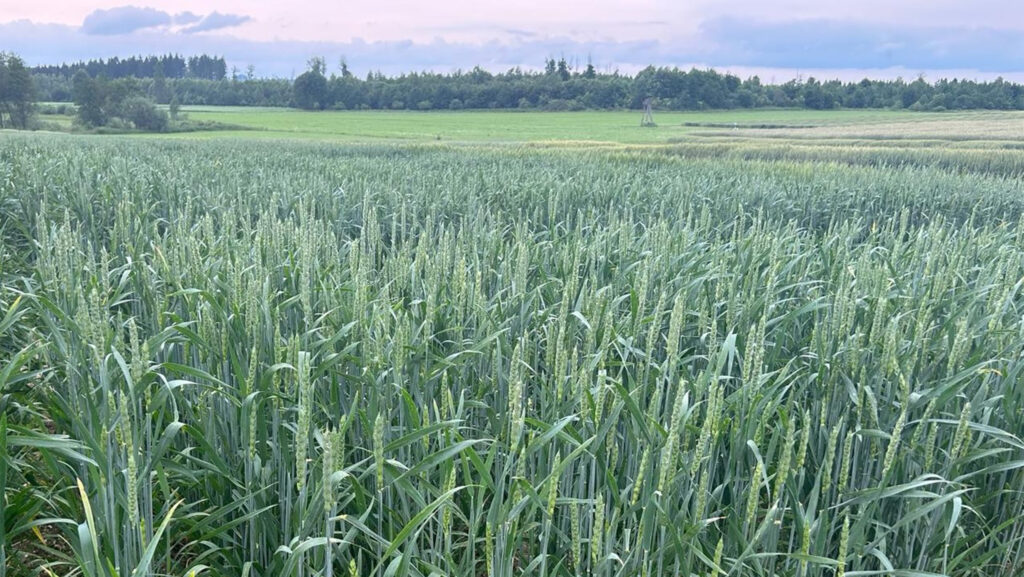New Group 4 spring wheat performs for flood-hit Lincs farmer
 Everlong spring wheat © Cope Seeds
Everlong spring wheat © Cope Seeds A newly recommended Group 4 spring wheat with a flexible drilling window has proved valuable for one flood-hit Lincolnshire farmer, delivering good yields in a challenging season from a late April planting.
Lincolnshire farmer Colin Chappell farms 690ha of low-lying heavy clay soils, and last autumn he struggled to drill winter wheat after the wettest winter his farm had ever seen.
“By 10 April, 85% of crops still needed to be drilled, due to a succession of storms kicked off by storm Babet in October 2023,” he says.
See also: Soil health pivotal for new Arable Insights farmers
“We wanted five or six days clear of rainfall, and we didn’t get it until April. Much of the cropping area was in standing water until that point – it was a terrible year.
“I had to replant 35ha of winter wheat for Warburtons – and one field three times, after it got flooded out twice over the winter.”
When considering what to drill, he opted for feed wheat instead of barley.
“Many farmers were planting spring barley following the wet winter, and due to my uncertainty about the resulting barley price, I opted for an alternative spring wheat, grown as a seed crop for Cope,” says Colin.
April drilling
Colin planted 15.5ha of Everlong on 28 April 2023 and was pleased with the results.
“Everlong went well into to heavy clay soils that had been flooded, but started to clear. It felt very late to plant, but the seed bounced out of the ground and was away quickly.
“In terms of nutrition, it received early nitrogen on the seed-bed, then manganese, zinc, and phosphite, which was repeated. And at tillering it had a second dose of nitrogen to total 150kg/ha of N.
“Then as the crop came through, it had phosphate, zinc, a bit of herbicide, a fungicide at tillering, and a second fungicide treatment for fusarium 4.5 weeks later, due to it being a seed crop,” he says.
Colin harvested Everlong on 21 September, and it was the last crop to go through the combine. It yielded 5t/ha.
“It was a high-quality crop with high specific weight of 80kg/hl, and a protein level of 13.9% – which is unheard of for a Group 4 with only 150kg/ha of nitrogen,” says Colin.
“Everlong performed well, and it was easy to grow; it’s also a nice, bold yellow colour when it’s ripened in the field – which, after the year we had, was some comfort.
“If we keep getting this unseasonal weather, alternative spring wheat will be in demand. It’s a strong back-up option,” adds Colin.
Trials
Gemma Clarke, managing director of Cope Seeds and Grain – which represents the variety Everlong – says trial and on-farm results continue to be encouraging.
“It’s clean, easy to manage, and produces the boldest grain of any spring wheat,” she says.
For 2024, in Agrii alternative wheat trials, Everlong demonstrated strong performance. And in the AHDB Recommended List trials, Everlong had the highest treated yield and specific weight.
She also highlights the Agrii Throws untreated spring wheat trials site, where Everlong demonstrated exceptional disease resistance, achieving a yellow rust score of 1 and a brown rust score of 2.
This indicates very low levels of disease compared to other varieties, where lower scores reflect better performance.
On the Recommended List, the variety has a 7 for yellow rust, 7 for brown rust and 6 for septoria.
Flexible drilling: October to April
Wetter winters are forcing farmers to look at alternatives and Cope is seeing increasing interest in varieties with extended drilling windows.
Wheat varieties that can be sown from October through to April – after maize, potatoes, root crops, and vegetables – are seeing a bigger uptake.
Everlong from Cope Seeds and Grain is a Group 4 feed wheat with the highest yield (107%) and specific weight (80.4kg/hl) of any spring wheat on the Recommended List, a strong disease resistance, and provides farmers with the “full package”.
The company says with a wide drilling window, it is a new option for late autumn-drilled wheat or as a true spring wheat option for the feed market.

